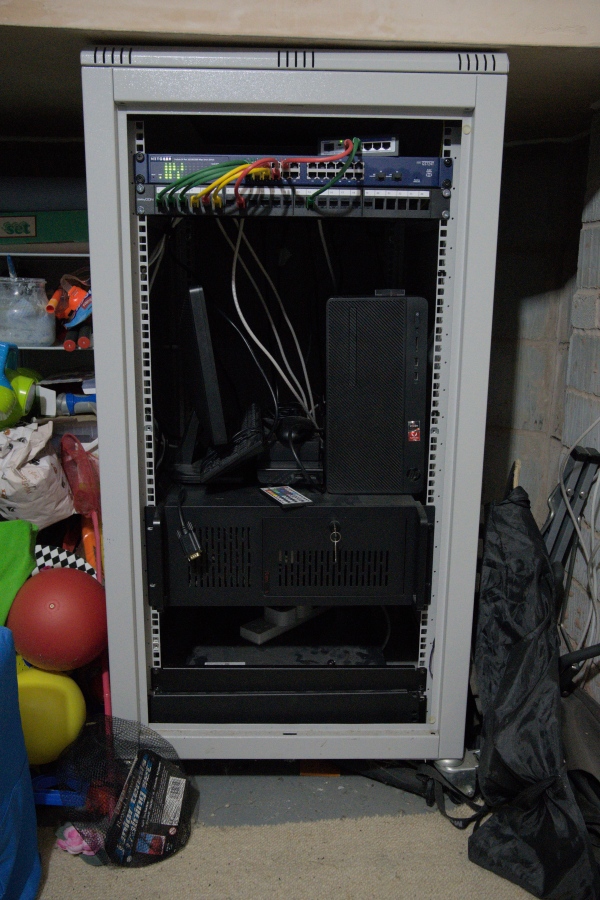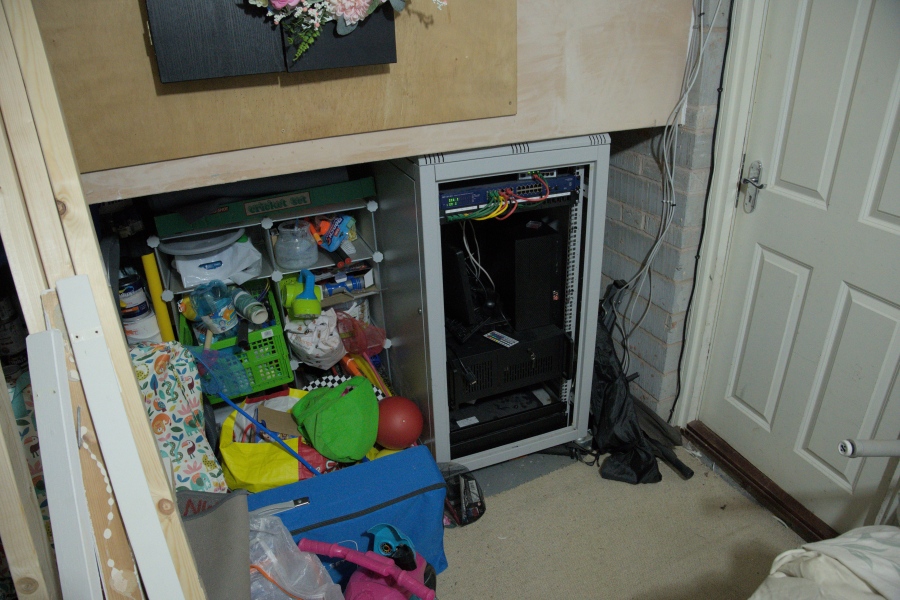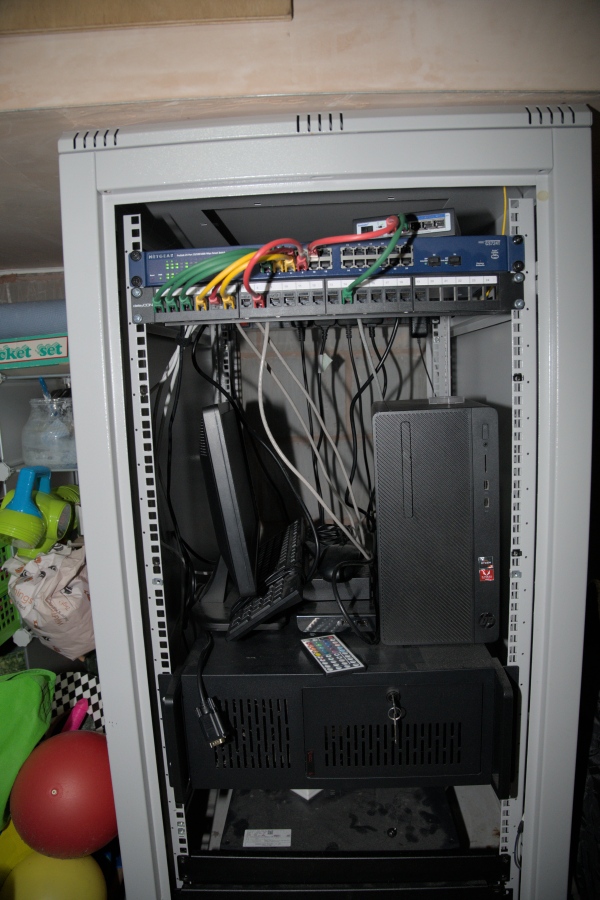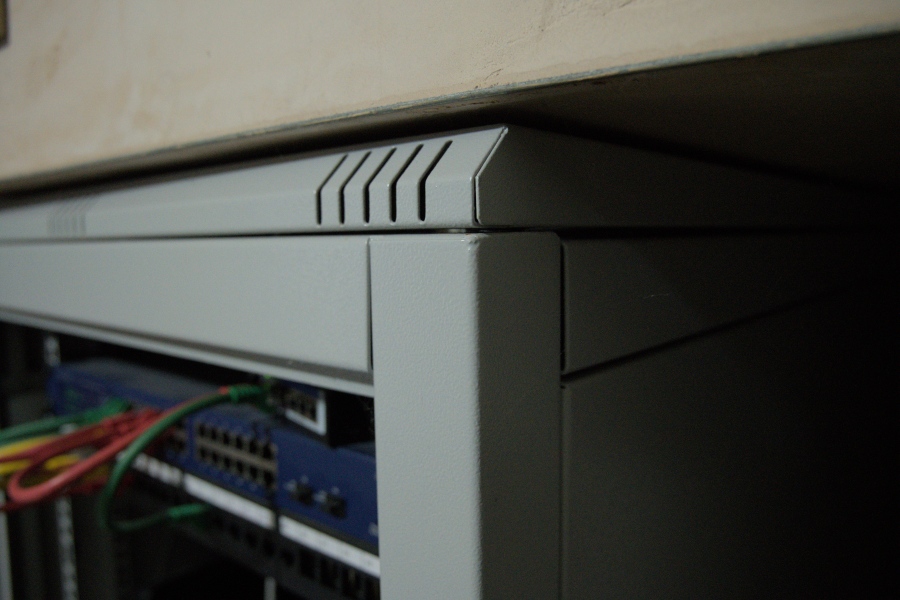

Not sure why I was downvoted for answering a question accurately.


Not sure why I was downvoted for answering a question accurately.


I use an SMTP Relay for sending mail, so I don’t hit issues with sending.


I’m also using iredmail. Apart from it needing more hardware than it used to its been pretty stable. I use an SMTP Relay for sending mail, so I don’t hit issues with sending. Not that I ever actually send many emails.


No. I host Firefox that runs in a browser.
It’s one of my favourite things. So places that may block certain sites can be bypassed.


Opnsense
Vaultwarden
Home assistant
Emby
Gitea
Paperless-ngx
Firefox


Some context shots. This is in my garage which is directly below my living room. Everything leads back here and the cat cable from the fibre ONT leads here from the other side of the garage also. I have 2 redundant gig links to a switch in the living room where it was weirdly easier to go outside the garage, up the outside wall and then back in to the house.
There is a rack mount standard desktop with a 4 port Intel NIC and an IT mode HBA, 6 spinning HDDs, an SSD and 2x NVME drives. This is my main Proxmox server running Opnsense and a whole host of other services, including email. On to of it I have a monitor, 3 external HDDs used for backups and another desktop I picked up cheap which runs as the Zoneminder CCTV box.
At the very top there is a cheap POE dumb switch that powers the CCTV camera and then a Netgear 24 port switch with VLANs configured for various networks - Main, IoT, VoIP, CCTV… I have the same switch up in the living room also.
At the very bottom almost invisible is a Belkin UPS and a strip adapter that has several smart plugs in which I use to power my backup drives. That way my backup drives are off, not just unmounted unless a backup is running. The aim was to avoid any attacker / system wide issue taking down the backup drives. I sleep a smidgen better at night for that.
Not pictured is an Odroid HC2 that lives upstairs and that I had hoped to rig up as a remote backup device, but I’ve never really got around to setting it up properly or putting anything other than a small capacity HDD in. It does run HomeAssistant though so that’s pretty useful.

A bit more context

More guts showing the mess.

Lets just appreciate how damn lucky I was when I picked up this server rack. It doesn’t fit with the carpet down, so had to peel that back. Millimetre perfect.



I can’t use VPN on my work PC so I have some services open on sub domains that aren’t in my DNS. Follow some basic rules and it’s fine. My phone is always connected to my Wireguard running on Opnsense. It’s simple, fully self hosted and works great.
It stole all my data. It’s a bit of a clusterfuck of a file system, especially one so old. This article gives a good overview: https://arstechnica.com/gadgets/2021/09/examining-btrfs-linuxs-perpetually-half-finished-filesystem/ It managed to get into a state where it wouldn’t even let me mount it readonly. I even resorted to running commands of which the documentation just said “only run this if you know what you’re doing”, but actually gave no guidance to understand - it was basically a command for the developer to use and noone else. It ddn’t work anyway. Every other system that was using the same disks but with ext4 on their filesystems came back and I was able to fsck them and continue on. I think they’re all still running without issue 6 years later.
For such an old file system, it has a lot of braindead design choices and a huge amount of unreliability.
Why fake serial numbers?
I used btrfs once. Never again!
Are you saying SSDs are faster than HDDs?
I was thinking Proxmox would add a layer between the raw disks and the VM that might interfere with ZFS, in a similar way how a non IT more HBA does. From what I understand now, the passthrough should be fine.
The server runs Proxmox and one of the VMs runs as a fileserver. Other VMs and containers do other things.
I won’t be running ZFS on any solid state media, I’m using spinning rust disks meant for NAS use.
My desire to move to ZFS is bitrot prevention and as a result of this:
Good point. Having a small VM that just needs the HBA passed through sounds like the best idea so far. More portable and less dependencies.
I’m starting to think this is the way to do it because it loses the dependency on Proxmox to a large degree.
Could this because it’s a RAIDZ-2/3? They will be writing parity as well as data and the usual ZFS checksums. I am running RAID5 at the moment on my HBA card and my limit is definitely the 1Gbit network for file transfers, not the disks. And it’s only me that uses this thing, it sits totally idle 90+% of the time.
Did you have atime on?
What I have now is one VM that has the array volume passed through and the VM exports certain folders for various purposes to other VMs. So for example, my application server VM has read access to the music folder so I can run Emby. Similar thing for photos and shares out to my other PCs etc. This way I can centrally manage permissions, users etc from that one file server VM. I don’t fancy managing all that in Proxmox itself. So maybe I just create the zpool in Proxmox, pass that through to the file server VM and keep the management centralised there.
It’s this: https://github.com/jlesage/docker-firefox